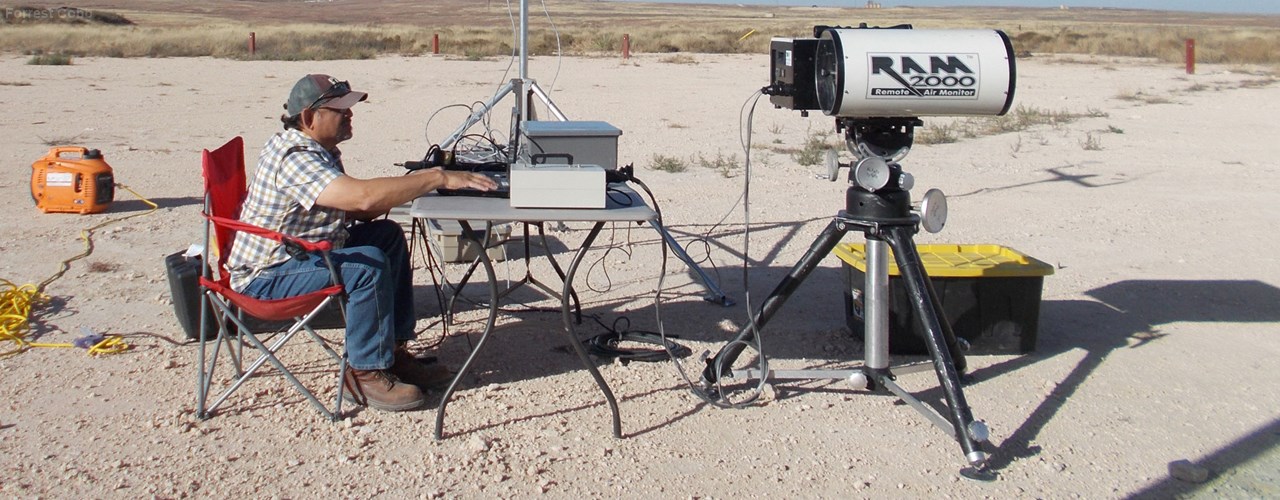NRI team uses innovative air quality technology to help landowners
Accurately detecting possible emissions from gas wells or other sources and then analyzing the resulting effects on ambient air quality can be complicated tasks.
A team of Texas A&M Natural Resources Institute (NRI) researchers is helping landowners across the state tackle such concerns on their properties by providing objective data and analysis of air pollutants. NRI research specialist Jesse Alonzo said the team uses an innovative combination of technology and processes to monitor and measure air quality.
They use remote air monitoring and optical gas imaging (OGI) to detect emissions of air pollutants from oil and gas production and other industrial activities located on or nearby the owner’s property. Then, using an Open Path Fourier Transform (OP-FTIR) spectrometer placed downwind of the potential emissions source, the researchers measure concentrations of chemicals. They use an OGI camera, which uses a specific portion of the infrared spectrum perfect for detecting gasses, to locate and record gaseous plumes at oil and gas sites, Alonzo said.
“NRI provides objective research using this equipment, following methods and protocols that are approved by the U.S. Environmental Protection Agency and state environmental agencies, and based on industry standards,” he said.
In addition, the team uses other instruments calibrated for methane, total organic compounds, or other gaseous chemicals to verify the OGI and OP-FTIR findings at a variety of wells or other sources, including monitoring wells and abandoned or plugged wells.
“With these technologies, we can help these ranchers identify possible emission sources efficiently, accurately and safely,” Alonzo said.
These processes are an improvement on air quality monitoring techniques used in decades past
Once the OGI camera identifies any sources of emissions present, the team uses the OP-FTIR and other instruments, such as a methane gas survey instrument, to detect and quantify gas composition and concentrations, he said. Landowners can then use that information to work with well operators to repair leaking equipment or otherwise implement emissions control/reduction techniques.
Observing wells or other sources for emissions of air contaminants helps to identify and prevent air pollution, said Forrest Cobb, NRI research assistant.
“This safe-guards landowners and surrounding communities from unintended releases of harmful constituents, as well as assisting operators in preventing loss and maintaining peak performance,” he said.
For more information, contact Alonzo at (210) 277-0292 x104.



 Jesse Alonzo monitoring real-time RAM 2000 OPFTIR Spectrometer data.
Jesse Alonzo monitoring real-time RAM 2000 OPFTIR Spectrometer data.